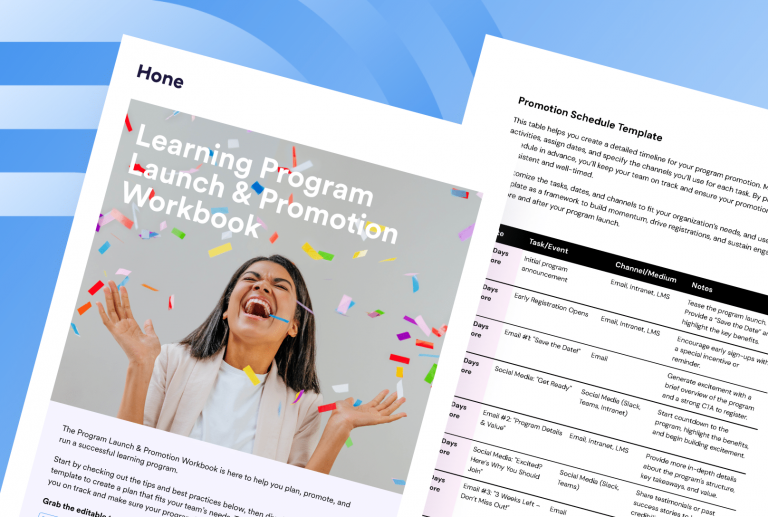What is a Recruitment Funnel?
The definition of a recruitment funnel refers to a series of stages that a potential job candidate goes through, from initial attraction to the point of being hired or rejected. The typical stages in a recruitment funnel include sourcing and attracting candidates, screening and evaluating resumes, conducting initial interviews, making job offers, and onboarding new hires. The goal of a recruitment funnel is to efficiently and effectively identify the best candidates for a given job while minimizing the time and resources spent on unqualified candidates. A company’s human resources (HR) department often manages the recruitment funnel. It can be aided by various tools and technologies, such as applicant tracking systems (ATS) and recruitment software.
Why is a Recruitment Funnel Important?
The recruitment funnel process helps organizations effectively manage the flow of job candidates from initial attraction to final selection. The funnel provides a clear understanding of where candidates are in the recruitment process, what stage they need to move to next, and what resources are needed to support them. This can help streamline the recruitment process, improve candidate experience, and ultimately increase the chances of hiring top talent.
The recruitment funnel process can also provide valuable data and insights that organizations can leverage to optimize their recruitment strategy, evaluate the effectiveness of their recruitment efforts, and make data-driven decisions about the future of their recruitment program. Overall, the recruitment funess helps organizations find the right people for the right jcost-effectively and efficientlynner.
The 5 Stages of a Recruitment Funnel
1. Awareness
Organizations bring as many ideal candidates into the recruitment funnel in the awareness stage as possible. Two touchpoints are the company’s career site and social media profiles. Both platforms showcase their:
- Workplace culture.
- Demonstrate their values.
- Convince potential applicants to join.
Organizational (or brand) awareness is a gauge of how recognized it is in the marketplace. Individuals may only know the company, products, or services if they want to work for it.
2. Attracting Candidates
The attraction stage focuses on candidate sourcing. Attracting relevant candidates requires the following:
- Identifying the best job boards and social media platforms to post job descriptions.
- Crafting a compelling job description.
The job description is the first sales pitch for potential candidates. Therefore, it needs to spark interest and outline the essential job requirements. In addition, the job description needs to include relevant keywords to show up in search results.
Organizations can often attract more candidates with third-party job boards. In addition, employee referrals and targeted advertising are different ways to attract talent.
3. Application & Screening of Candidates
The application stage generates the highest volume of qualified applicants. First, screening involves thinning the herd. Then, hiring managers review candidates’ experience and potential.
4. Interviewing & Selection
The top candidates make it to this stage. The hiring manager may shortlist applicants for interviews. Some companies do background checks as part of the selection process.
Traditionally, interviews are in person, but they may be done via video conferencing. After the first round of interviews, hiring managers should know the best candidates.
5. Hiring
Hiring is the final stage of the recruitment funnel. After that, organizations make a job offer to the final candidate.
The candidate may accept, negotiate, or reject the offer. If they leave the offer, the hiring manager must go back to the interviewing step.
5 Ways to Test a Recruitment Funnel’s Effectiveness
The following are five ways to measure a recruitment funnel’s effectiveness.
1. Quality of Hire
The quality of hires measures the value employees bring to the company. Hiring high-quality employees drives business performance forward. This measurement determines if recruiting is delivering top performers or just filling positions.
Hiring quality employees means higher productivity, improved culture, and over all success. In addition, organizations can restructure their recruiting process as needed.
2. Time to Hire
Organizations have higher costs the longer it takes to fill open positions. Recruiting is the first expense. And they suffer from indirect costs, such as production losses.
Ideally, the hiring time is from when recruitment starts to the employee’s hire date. However, most begin the time when they receive the application.
3. Cost per Hire
Cost per hire is the total investment for finding and hiring candidates. This metric can guide the recruitment amount for specific jobs. In addition, it can be a benchmark for future hiring budgets and plans.
4. Source of Hire
Some sourcing channels that contribute to the potential candidate pool include:
- Job boards.
- Recruitment ads.
- Sourcing tools.
- Professional social networks.
- Employee referrals.
A source-of-hire metric can decide whether organizations should recruit and use external agencies. For example, a company has five open positions.
The internal team may fill four out of the five positions, whereas the agency filled only one. In this case, the internal recruitment team was more effective.
5. Hiring Diversity
The dangers of conformity in the workplace include lower creativity and revenue. Therefore, attracting and hiring diverse talent is a deliberate practice throughout the recruitment funnel.
7 Recruitment Funnel Metrics & Benchmarks
Metrics and benchmarks let organizations compare themselves with others. Human Resource (HR) departments report and set realistic goals based on data.
Benchmarks are relevant data and allow management to make stronger recommendations. They completely change the nature of hiring conversations.
1. Brand Awareness & Attracting Candidates
For this metric, compare the number of website visitors to applicants. A conversion rate of 10% or higher indicates a high attraction. Less than this percentage could deduce needed website optimization to improve awareness.
A low completion rate may mean candidates are staying in the application. Businesses can improve the rate by identifying the reason, such as:
- Too long of an application.
- The questions could be better organized and structured.
- There are sensitive or personal questions.
- There may be a technical issue with the platform.
The application completion rate measures the success of the platform. A seamless path has the fewest hurdles for applying. Automated emails confirm the company received their application. They can also provide details about the next steps.
Job seekers apply for jobs using mobile devices. Therefore, an online application needs to function correctly on smartphones and tablets.
The average number of applications per open requisition is 59. However, this number depends on the industry and other factors.
2. Screening Candidates & Interviewing
A candidates-per-hire metric measures the effectiveness of recruitment efforts. It is the number of candidates the hiring manager interviews before hiring. On average, only 12% of applicants reach the interview stage. This is because the earlier stages of the recruitment funnel (such as resume screening and initial interviews) are designed to narrow the pool of candidates to the most qualified and suitable individuals. Ultimately, the goal is to identify the best fit for the job and the company, which may mean that many candidates are rejected at earlier stages of the recruitment funnel.
- It saves the hiring manager’s time.
- Ensures the recruiter and hiring manager are aligned on what they are looking for.
- Gauges the recruiter’s and interviewing team’s effectiveness.
Multiple interviews can create an unnecessary clog. Companies may have three, four, or more rounds of interviews. In a strong job market, candidates are likely to leave before the five rounds of interviews.
Hiring managers should have at most one or two candidates at the end of the first round of interviews.
3. Quality of Hire
Quality-of-hire metrics vary for different businesses. They can include factors like:
- Cultural fit.
- Job performance.
- Ramp-up time.
- Management abilities.
- Retention.
Companies can create a benchmark with a satisfaction rate. A satisfaction rate can be the hiring manager’s fulfillment with interviewed candidates. It can also include the candidate’s interview experience.
A simple measuring method is collecting feedback from hiring managers or candidates. Feedback can help improve the process. Companies can calculate satisfaction rate by:
- Creating a survey about the recruiting experience
- Providing a scoring range for each question
- Calculating the results to generate a satisfaction rate.
4. Time to Hire
A quick online search can show time-to-hire benchmarks. But averages vary according to every position. Common positions can be filled in less than 30 days. High-demand roles can take over five months.
According to a study by JobVite, it takes:
- Twenty-nine days on average to hire a referred candidate.
- Thirty-nine days to hire a candidate through a job posting.
- Fifty-five days to hire a candidate through a career site.
Knowing the average time-to-hire for different roles is extremely valuable. It helps accurately gauge the time to fill a vacant position in the future.
5. Cost per Hire
Talent acquisition can determine the average investment cost of new hires. The cost-per-hire rate divides the recruiting costs by the number of engagements.
The average cost per hire is about $4,700. But many organizations claim the total cost is three to four times the position’s salary.
6. Source of Hire
According to CareerPlug:
- Job boards produce 72% of applicants, but only half are hired.
- Applicants are four times as likely to be hired through an organization’s career page.
- Applicants through industry-specific job boards were 17 times more likely to be hired.
- Employee-referred applicants are 18 times more likely to be hired.
Research shows that an employee referral is a cheaper and faster way to hire. In addition, it generally produces a better hire and lowers the turnover rate at a company. As a result, many organizations install referral programs to entice employees to suggest people.
7. Hiring Diversity
The Diversity Index measures the percentage of underrepresented groups in a given population. It provides a clear and concise way to compare different populations.
The Index first identifies the total number of employees. Then it calculates the percentage of each underrepresented group.
However, it does not consider factors such as industry, socioeconomic status, or region. Therefore, it should be one piece of data when evaluating Diversity rather than the sole metric.
Measuring the Recruitment Funnel Conversion Rate
Recruiting is a form of selling. HR and recruiting departments entice individuals to work for the company. The recruitment funnel has three primary conversion rates:
- The number of website visitors who become applicants.
- The number of applicants who become interviewees.
- The number of interviewed candidates who accept offers.
The job conversion (or fill) rate ultimately dictates a successful recruitment process. It is the percentage of new hires compared to the number of vacancies. Organizations may use this measurement to determine recruiters’ value. Or decide whether they should recruit internally or use external agencies.
However, the industry, job market, and other factors influence this metric. For instance, 89% of candidates offered jobs accept. If the organization has a lower percentage, the compensation could be responsible for a low fill rate.
Employee retention rates measure the organization’s ability to keep its workforce. It shows the stability of a growing workforce. So, recruiting may have difficulties filling positions in companies with high turnover rates.
Looking at the micro-conversion rates more accurately defines recruiting strategy success. Likewise, it can show where problems may lie.











